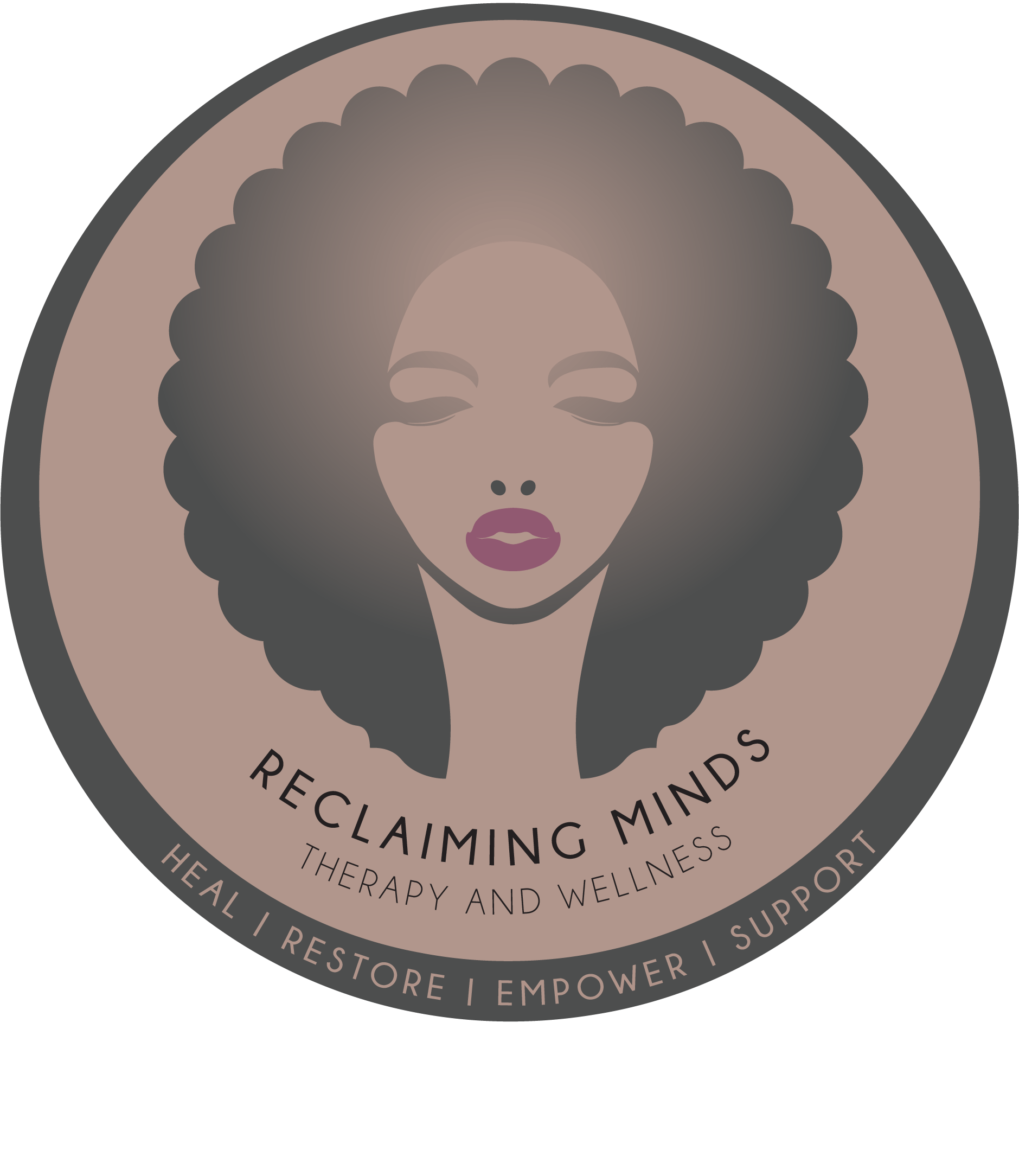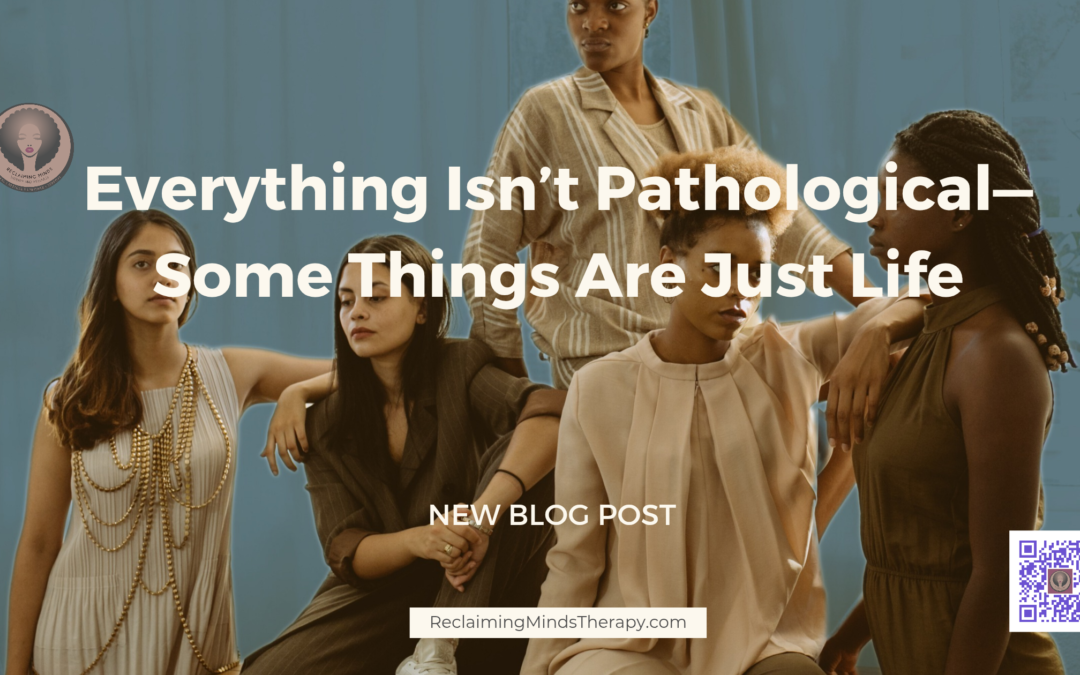In an age of heightened mental health awareness, there’s an increasing tendency to categorize
every emotional response, discomfort, or struggle as a clinical issue. While it’s true that many
people suffer from legitimate mental health conditions that require support and treatment, we
must also recognize an equally important truth: not everything is pathological. Some things are
just life.
There is a fine line between validating mental health struggles and over-pathologizing the
human experience. In our quest to name our emotions, we sometimes forget that feeling
sadness, anxiety, grief, or frustration doesn’t always mean something is wrong. It often just
means we are alive.
So how do we distinguish between what is a natural part of life and what may require deeper
support? Let’s explore.
The Pathologization of the Human Experience
Mental health language has become more accessible in recent years, which is largely a good
thing. However, with this expansion has come a subtle but significant shift: the tendency to label
every discomfort as a disorder.
Feeling anxious before a big decision? That doesn’t necessarily mean you have an anxiety
disorder.
Experiencing deep sadness after a breakup? That’s not automatically clinical depression.
Struggling with motivation during a difficult season? That doesn’t mean you have burnout or
ADHD.
What we often forget is that human emotions exist on a spectrum. There is a normal range of
sadness, stress, fear, frustration, and even despair that comes with life’s inevitable ups and
downs. The problem arises when we assume that every challenging emotion is a symptom of
dysfunction rather than a natural, albeit painful, part of being human.
Why Do We Pathologize So Much?
There are several reasons why we’ve come to view so many of life’s struggles through a clinical
lens:
1. The Language of Mental Health Is More Mainstream. Terms like “trauma,” “narcissism,”
“attachment wounds,” and “burnout” have become widely used—even outside of clinical
settings. While this has helped reduce stigma, it has also led to the overuse and misuse of
diagnostic language.
2. We Live in a Culture of Quick Fixes. Emotional pain is uncomfortable. If we believe that our
distress is a disorder, it suggests there’s a cure—whether that’s therapy, medication, or a
self-help solution. But some emotional experiences aren’t meant to be “fixed”; they are meant to
be felt and moved through.
3. Social Media and Self-Diagnosis. Short-form content often reduces complex psychological
concepts into digestible soundbites. Many people come across a post about trauma responses
or mental illness and immediately identify with the symptoms, without deeper exploration.
4. A Desire for Validation. Naming our struggles can feel validating. If we can define our pain,
we can justify it. But sometimes, the more helpful approach is to accept that life is difficult,
emotions are messy, and not every hardship requires a diagnosis.
When It’s Just Life vs. When It’s More Than That
So how do we know when we are simply experiencing life and when we might need additional
support? Here’s a helpful framework:
Signs It’s Just Life:
✔️ Your emotions shift naturally over time, even if they are intense.
✔️ Your distress is tied to a specific situation (loss, transition, uncertainty).
✔️ You can still function in your daily life, even if it’s difficult.
✔️ You don’t feel consumed or defined by your emotions.
Signs It May Be More Than That:
⚠️ Your distress is persistent, lasting weeks or months without improvement.
⚠️ Your emotions feel unmanageable and significantly impact daily functioning.
⚠️ You struggle with work, relationships, or self-care due to your mental state.
⚠️ You feel stuck in distress, even when circumstances change.
This is not to minimize real mental health concerns—anxiety disorders, depression, PTSD, and
other conditions are very real and deserve professional support. But not every wave of sadness
is depression. Not every worry is an anxiety disorder. Not every hardship is trauma.
How to Hold Space for Yourself Without Pathologizing
If you find yourself questioning whether your emotions are “normal” or indicative of something
deeper, here are some ways to approach your experience with more nuance:
1. Give Yourself Permission to Feel
Not every difficult feeling requires intervention. Sometimes, the healthiest thing you can do is
allow yourself to experience emotions without rushing to label or “fix” them.
Instead of asking, What’s wrong with me? try asking, What is this emotion telling me?
Instead of seeking a diagnosis, try seeking understanding.
2. Normalize Discomfort as Part of Growth
Life is full of transitions, heartbreak, uncertainty, and change. These things are hard—but they
are not inherently pathological. Some pain is meant to be endured, not eliminated.
What if frustration is simply a sign of stretching beyond your comfort zone?
What if sadness is just evidence that you cared deeply?
What if feeling lost is part of discovering something new about yourself?
3. Seek Support Without Overidentifying with Labels
There is nothing wrong with seeking therapy or mental health resources when you’re struggling.
But be mindful of the tendency to over-identify with a diagnosis. You are not your anxiety. You
are not your trauma. You are a person moving through a difficult moment.
4. Find Meaning in the Messiness
Some of life’s most difficult emotions don’t need a diagnosis; they need processing, reflection,
and time. Ask yourself:
What can this experience teach me?
How can I honor my emotions without assuming they mean something is wrong with me?
What do I need in this moment to support myself, rather than “fix” myself?
A Final Thought: Healing Isn’t Always About Fixing
In a world that urges us to label, diagnose, and correct every feeling, let’s remember that being
human is complex. Pain and joy coexist. Growth often looks like struggle. And not everything
that feels hard is a sign that something is wrong.
So the next time you feel sadness, anxiety, or discomfort, pause before you pathologize it.
Ask yourself:
“Is this something to heal from, or is this just something to feel?”
Give yourself the space to experience life in all its messiness. You are not broken—you are
simply human.
If this resonated with you, share your thoughts in the comments below. How do you navigate the
balance between honoring your emotions and knowing when deeper support is needed?
#MentalHealthAwareness #EmotionalWellness #ReclaimingMindsTherapy #HealingJourney
#SelfReflection #TherapyForBlackWomen


Recent Comments